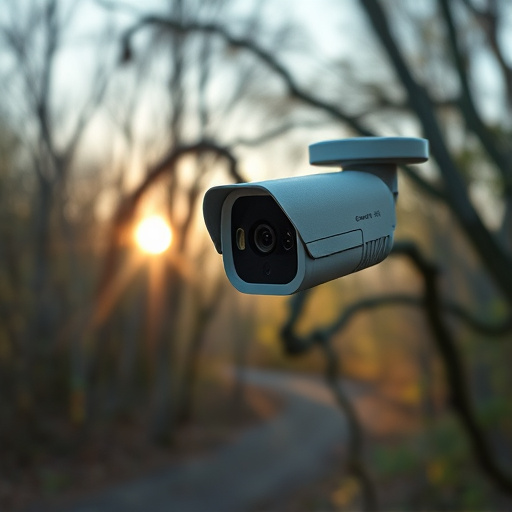Homeowners should remain vigilant about potential covert surveillance cameras disguised as everyday objects like light bulbs or smoke detectors. Regular inspections, examining unusual fixtures, and trusting instincts are key to identifying these devices. Invest in specialized tools such as digital imaging software, metal detectors, and night vision goggles for thorough inspection. Use reflective materials, mirrors, fake plants, and regularly check exterior areas for signs of hidden cameras to protect against unwanted surveillance.
Uncover potential hidden threats with our comprehensive guide on identifying and masking security camera signs in your home. Many modern devices blend seamlessly into everyday objects, making covert surveillance a subtle yet serious concern. Learn to recognize these signs—from unusual electrical outlets to subtle LED indicators—to ensure your privacy. This tutorial equips you with the knowledge and tools to detect and mask cameras effectively, offering practical steps for enhancing your home security without sacrificing comfort.
- Identifying Signs of Covert Cameras in Your Home
- Understanding Common Masking Techniques Used
- Tools and Equipment for Camera Detection
- Step-by-Step Guide to Securely Mask Objects at Home
Identifying Signs of Covert Cameras in Your Home
Many modern homes may unknowingly harbor signs of covert surveillance cameras, making it crucial for homeowners to be vigilant and educated. These hidden cameras can be disguised as everyday objects, such as light bulbs, smoke detectors, or even fake rocks, making them hard to detect with the naked eye. To identify potential hidden cameras, start by examining any unusual fixtures or devices in your home. Look for items that seem out of place, like a camera lens peeking from behind a clock or a strange marking on what appears to be an ordinary light bulb.
Pay attention to areas where privacy is often sought, such as bedrooms, bathrooms, and home offices. Check for any unusual wiring or recent modifications to these spaces. Additionally, be wary of new devices or accessories that appear without explanation. Regularly inspect your surroundings and trust your instincts; if something feels amiss, it might be worth further investigation. By being proactive and staying alert for signs of covert surveillance cameras, you can take steps to protect your privacy and secure your home environment.
Understanding Common Masking Techniques Used
Many people are unaware that their homes may already be under surveillance, with hidden cameras capturing intimate moments. Understanding common masking techniques is crucial in spotting these covert surveillance cameras, often disguised as everyday household objects. One popular method involves embedding tiny cameras within seemingly innocuous items like light switches, smoke detectors, or even doorbells. These devices are expertly designed to blend seamlessly into their surroundings, making them nearly invisible to the naked eye.
Additionally, advanced masking techniques use smart technology to alter the appearance of security cameras. Some cameras can switch between different modes, mimicking ordinary objects like pictures or books when not in use. Others employ artificial intelligence to match their feed with nearby decor, effectively hiding any signs of covert surveillance. Staying informed about these tactics is essential for homeowners seeking to protect their privacy and identify potential hidden cameras.
Tools and Equipment for Camera Detection
To effectively mask security camera in your household, you’ll need a few specific tools and equipment designed for detecting and neutralizing covert surveillance devices. Start with high-quality digital imaging software that can analyze images and videos for signs of hidden cameras—these often include advanced algorithms to detect subtle anomalies like irregular pixels or subtle light reflections that could indicate the presence of a hidden lens.
Next, invest in a metal detector, as many modern spy cameras are equipped with metallic components. A powerful magnet or electromagnetic pulse generator can also be useful for temporarily disabling active cameras. Additionally, consider infrared (IR) illuminators and night vision goggles to aid in your search during low-light conditions. Remember, the goal is to approach your household’s security with a thorough understanding of potential hidden surveillance devices, using these tools to ensure your privacy remains intact.
Step-by-Step Guide to Securely Mask Objects at Home
To securely mask objects at home from security cameras, follow this step-by-step guide. Firstly, identify potential areas where surveillance cameras might be hidden – common spots include above doors, windows, and light fixtures. Next, use high-quality, reflective materials like metallic paints or foil to cover these surfaces. This technique can disrupt the camera’s line of sight by reflecting light in unpredictable ways, effectively hiding objects from view.
Secondly, employ creative masking techniques for everyday items. For instance, place mirrors strategically to reflect light and obscure cameras. Consider using fake plants or decor items that mimic the real thing but are designed to block camera lenses. Lastly, regularly inspect your home’s exterior for any signs of covert surveillance cameras, such as unusual wires or small, discrete devices, to ensure ongoing protection.
In today’s digital age, privacy is paramount. By understanding the signs of covert surveillance cameras and mastering the art of masking household objects, you can reclaim your personal space. Armed with knowledge about common masking techniques and the right tools, you’re well-equipped to detect and secure your home from unwanted eyes. Remember, a little vigilance goes a long way in safeguarding your privacy.
